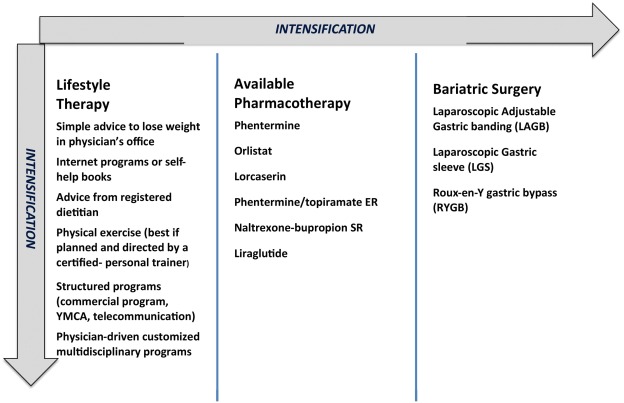
In the United States, fast food accounts for approximately 11 percent of the total energy consumed by adults. These meals are largely responsible for the rising rates of diabetes, obesity, and heart disease, and a new study may explain why they're causing these problems. Boston University and Tufts University researchers report that fast food has gotten progressively more unhealthy as time has passed, and that the amount of sodium in each meal has increased.
Bariatric diet fast food
It can be difficult for many to eat out on the go. Fast food is convenient, cheap, and sometimes delicious, but it can also cause problems for people who are following a diet that restricts calories. However, many chains have adapted to these changes, offering menu options that are lower in calories and carbs. Even fast food giants such as McDonald's have a low-carb option. These items can also be found online.
Although some fast food restaurants offer healthy options, most are not suitable for those with a bariatric condition. Many offer options that are bariatric-friendly. It is important to choose healthy alternatives whenever possible. But, for those on a restrictive diet, fast food isn't your only choice. You should avoid skipping meals as this will cause your body to enter starvation mode. This can slow down your metabolism, increase fat storage, and make it more difficult for you to eat. It is possible to overeat at your next dinner, increasing your weight.

Fast food that is low in carbs
It can be difficult to choose the right food for a low-carb diet. Fast food is not always the best option. Luckily, a number of chains have caught on to the low carb trend. Keep in mind that fast food should always be served with vegetables and non-breaded protein to keep you on the right track. Avoid the cream dressings and breads as well as French fries, tortillas, and other creamy condiments.
Salad is a great low-carb option for fast food. Wendy's Southwest Avocado Chicken Salad packs just 390 Calories, 12 grams fat, and 37g of net carbs. It includes tomatoes, avocado, black beans, steak, and cheddar cheese. It is served with southwest vinaigrette. Panera Bread also has a range of salad options that can be made low-carb. You can order one of many salads, or the Grilled Chicken Sandwich that has no buns.
Low calorie fast food
Fast food chains have become more health-conscious and transparent with their ingredients and cooking methods. If you are looking for low-calorie fast food, there are many options available. Before making the switch, however, it is crucial to understand what you should look for. The best option is to opt for healthier versions of fast food meals. Fast food restaurants should offer lower-calorie options of entrees.
To eat a low-calorie, healthy diet, you must limit your intake of calories. Avoid high-sodium foods and fatty items. Opt for whole grains, low fat proteins and a lower-fat version your favorite dishes. It will be possible to enjoy the flavors of your favorite foods while adhering to your calorie restrictions. The Fast Food Diet encourages you to eat three meals and two snack per day.

Fast food that is low in fat
There are two types of fast food: high-fat or low-fat. Fast food is high-fat, but it should not be high high in saturated fat or low in fiber. Look for menu items that are low in trans fats and contain minimal amounts of saturated fat. Add healthy items to your fast food in order to improve its nutritional content. Instead of ordering the whole salad, get a side dish of fresh vegetables along with low-fat milk and water.
Fast food can be convenient for busy people, but it shouldn't be a regular diet. Fast food is also high in fat and salt, and it often lacks vegetables, fibre, and fruits. However, don't let that deter your enthusiasm! Healthy fast food can be enjoyed in moderation just as any other food. Although it is acceptable to indulge occasionally, it is best to limit your consumption to a manageable amount.
FAQ
What amount of exercise is necessary to lose weight?
There are many factors that impact the amount you exercise to lose weight. However, the majority of people require at least 30 minutes of moderate exercise five days a week.
The American College of Sports Medicine recommends 150 minute of moderate-intensity aerobic activities per week. These should be done over three days.
If you are trying to lose 10 pounds, 300 minutes of moderate intensity exercise per week is a good goal. This includes activities like jogging or running, swimming laps and biking.
If you're just starting out, consider doing 20 minutes of vigorous activity thrice weekly. It could be sprinting, lifting weights, jumping rope or fast walking.
Aerobic exercise helps to build muscle mass and burn calories. Muscles burn more calories than fat. You may be able to achieve your goal quicker by building muscle and losing fat.
How long should I do Intermittent fasting to lose weight?
The answer is not as simple as you might think. For optimal fat loss, you need to take into account many factors. These include:
-
Your age. For example, if you're young (under 40), intermittent fasting may be too difficult for you because you have less time to recover from each day's fast. You may not have enough energy for a sustained period of daily fasting if you are older (over 60).
-
Your current body composition. If you already have a lot of muscle mass, you'll likely benefit most from longer periods of fasting. However, if you have little muscle mass, then shorter periods of fasting may be better suited for you.
-
How physically active you are. If you exercise regularly, you may need to extend your fasting window to ensure that you still get adequate rest between workouts.
-
Your health history. Additional fasting monitoring may be required for certain medical conditions such as diabetes or heart disease.
-
How do you handle stress? Stressful situations can make us eat more. You might need to lengthen your fasting windows in order not to have this problem.
-
It is the type of diet you are following. Certain diets, like ketogenic diets, may require even longer fasting periods.
-
Your quality of sleep. Insufficient sleep has been associated with decreased metabolism and increased appetite. Therefore, it may take some experimentation before determining what works best for you.
-
How much protein you eat. Protein helps stabilize blood sugar levels, which means that eating more protein could potentially lead to lower insulin levels. This will allow you to fast longer.
-
Whether you're trying to gain or lose weight, people who are trying to gain weight usually require longer fasting periods than those who are trying to lose weight.
-
How many calories do you consume in your fasting windows? Fasting for fewer calories per days may lead to greater fat loss than fasting with more calories.
-
Your fitness level. Fasters who are very fit tend to have higher metabolic rates, which allows them to burn more calories throughout the day.
-
Your gender. Men have greater appetites than women and may need to fast longer. Women have smaller appetites than men, so they may need to fast just 20-30 minutes each day.
-
Your lifestyle. Are you someone who gets plenty of physical activity? Do you exercise multiple times a week or do you just go to the gym? Are you a worker who sits at a computer all day? These things could impact the speed at which you should go.
-
How much do you spend per month on food? Eating healthy foods doesn't necessarily mean spending much money on groceries. You can save money by buying whole grains instead of white bread, fruits instead of candy bars, and lean meats instead of fatty cuts.
-
How important it can be to control your appetite. You don't have to skip meals if you don’t want to.
What can I have in the morning when I'm intermittently fasting?
Drink water before you go to bed at night. This helps you feel fuller quicker and gives you energy for the rest of your day. To add some flavor, you can add lemon juice to the mix or cucumber slices.
Why is exercise important for weight loss?
The human body has incredible capabilities. It's designed to move. Moving our bodies is important for our health.
Exercise helps to burn calories and improve muscle tone. This helps you feel happier both mentally and physically. It is common to hear people say that exercise is essential for weight loss. But what exactly is it?
-
Exercise improves metabolism. Your body uses energy when you are active. Moves increase heartbeat, blood flow, and oxygen absorption. These activities all require energy. Your metabolic rate increases, which means you'll burn more calories while exercising. You can calculate how many calories your body burns by doing physical activity.
-
Exercise reduces appetite. Exercise can help you lose weight.
-
Strengthening your muscles through exercise is key. Muscle tissue takes more energy to work than fat tissue. You will be able to lose weight if you have more muscle mass.
-
Exercise releases endorphins. Endorphins, hormones that make you feel happy, are released when you exercise. They are released when you exercise. Endorphins block pain signals from reaching the brain, according to studies. This gives you a feeling of well-being.
-
Exercise improves self-esteem. Regular exercise is associated with higher self-esteem. People who exercise regularly live longer and healthier lives.
If you want to lose weight, start with small changes. You can add one of these tips into your daily life today.
Statistics
- Among women, the increase in metabolic rate was nearly 4%, or 50 more calories per day (14Trusted Source (healthline.com)
- According to a study sponsored by the American Council on Exercise, a person weighing around 140 pounds (64 kg) would burn 108 calories at a 30-minute beginner's Pilates class or 168 calories at an advanced class of the same duration (26). (healthline.com)
- A 12-week study in 20 women with obesity found that walking for 50–70 minutes 3 times per week reduced body fat and waist circumference by an average of 1.5% and 1.1 inches (2.8 cm), respectively (healthline.com)
- It's estimated that half of all American adults attempt to lose weight every year (1Trusted (healthline.com)
External Links
How To
How to exercise for weight loss
One of the best ways you can lose weight is to exercise. Many people are not aware of how to properly exercise. Cardio exercises should include running, biking, swimming, walking, etc. and strength training exercises like lifting weights, pulling-ups or pushing ups, squats and lunges. Combining both of these exercises will help you lose weight the most. Begin exercising by finding friends to help you. You can either go to the gym or walk around your local area. No matter which type of activity, you need to be consistent with it. It's very easy to get off track when you first start working out, so don't give up if things aren't going well right away. Keep at it!